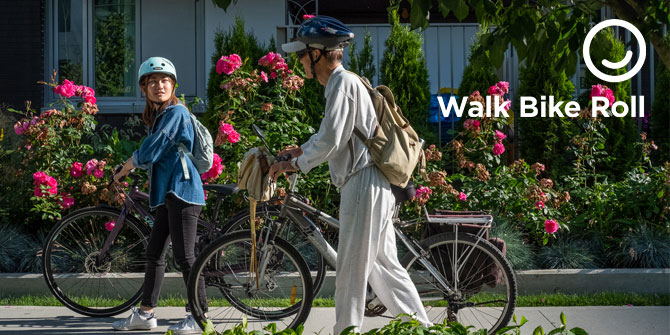

Our goal: to help achieve our Climate Emergency Action Plan target that two-thirds of daily trips taken be by active transportation and transit by 2030.
Over the past 20 years, the number of people living, working, and travelling in Vancouver has grown, and there are more trips than ever.
Despite this, the total number of motor vehicles entering Vancouver and downtown has declined. More people than ever choose to get around by walking, cycling, rolling (mobility aid, skateboard, scooter, etc.), and transit.
By walking, cycling, rolling, and taking transit more often, you’re:
- Helping your personal health (Healthy City)
- Helping the health of your environment (Greenest City and Climate Emergency Action Plan)
- Alleviating congestion [Transportation 2040, Climate Emergency Action Plan, and Transportation Demand Management Action Plan PDF file (843 KB)] to make room on the streets for vehicles who need to be there most (like goods movement and emergency vehicles)
of all daily trips were made by active transportation and transit
leading pedestrian intervals were installed in 2024
boardings on the 99 B-Line, the busiest bus route in 2024
total Mobi bikeshare rides taken in 2024
Speed limits were lowered at 16 additional elementary school zones in 2024
kilometres of cycling routes as of 2024
Lime, Vancouver’s shared e-scooter system, surpassed 10,000 rides in 2024
